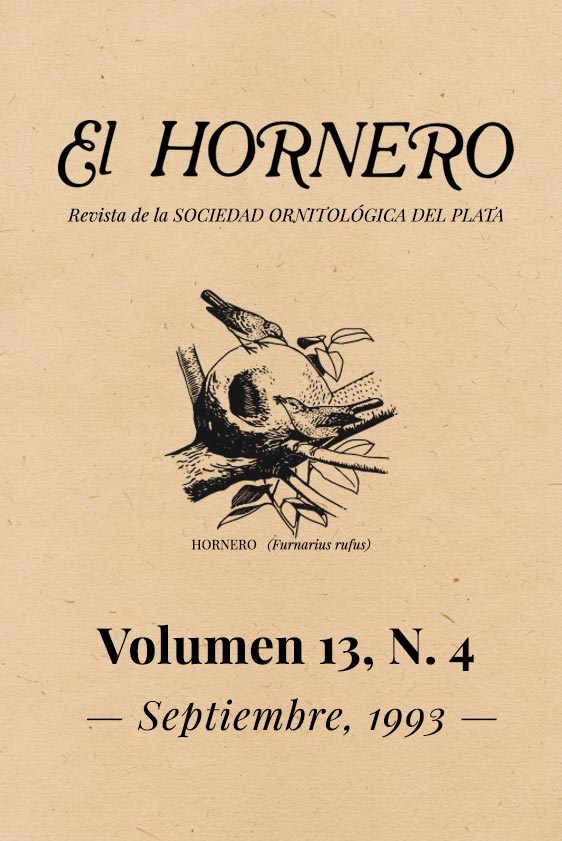Abstract
In this note, I report on the occurrence of albinistic eggs (i. e., lacking shell pigmentation) in a population of House Wrens (Troglodytes aedon) in Colombia. In a study site encompassing about 15 wren territories, two females laid albinistic eggs during a two-and-a-half year period. One female laid 17 completely white eggs during the study. The second case involved a progressive loss of eggshell pigmentation. This female laid normally pigmented eggs at the beginning of the study, but her eggshells became progressively albinistic, and at the end of the study she was laying completely white eggs.
References
Alvarez,H.,M.D.HerediayM.C.Hernández.1994.ReproduccióndelCucaracheroComún(Troglodylesaedon)enelValledelCauca.Caldasia14:85-123.
Gross,A.O.1968.AlbinisticeggsofsomeNorthAmeri-canbirds.BirdBanding39:1-6.
Hayes,D.1985.lJnusualWesternBluebirdeggs.Wes-ternBirds16:146.
Lack,D.1958.ThesignificanceofthecolourinTurdineeggs.Ibis100:145166.
Laskey,A.R.1943.ThenestingofBluebirdsbandedasnestlings.BirdBanding14:39-43.

This work is licensed under a Creative Commons Attribution-NonCommercial 4.0 International License.





